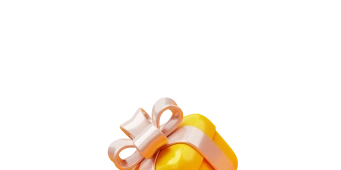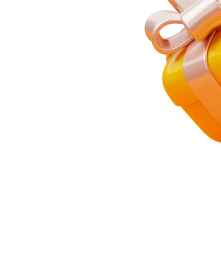Unlocking the Mystery: Why is My Dog Pulling at His Dew Claw?
Having a dog as a beloved pet comes with its fair share of responsibilities. One such responsibility is ensuring the overall health and well-being of your furry friend. Dogs, like humans, can experience various discomforts and ailments that require our attention and care. One common behavior that dog owners may notice is their dog pulling or chewing at their dew claw. This behavior can be concerning, and it’s essential to understand why it may be happening.
The dew claw is a small, vestigial digit located on the inner side of a dog’s front or hind leg, just above the paw. While not all dogs have dew claws, many breeds, such as Great Pyrenees, Saint Bernards, and Australian Shepherds, are born with them. Dew claws serve no functional purpose and can vary in size and shape. They are often loosely attached and can dangle or catch on objects, making them more susceptible to injury or irritation.
When a dog repeatedly pulls or chews at their dew claw, it can indicate several underlying issues. One common reason is that the dew claw may be injured or damaged. Dogs can easily catch their dew claws on furniture, fences, or during vigorous play, leading to sprains, strains, or even fractures. In such cases, the dog’s instinctual response is to alleviate the discomfort by attempting to remove the source of irritation.
Another possible cause for a dog pulling at their dew claw is an underlying skin or nail issue. Dogs, like humans, can experience dry, itchy skin, or develop infections around their nails. These conditions can cause discomfort and lead to the dog’s persistent attempts to alleviate the irritation by chewing or pulling at their dew claw.
Additionally, certain behavioral factors may contribute to a dog’s dew claw pulling. Dogs, especially those with high energy levels or anxiety, may resort to repetitive behaviors as a means of self-soothing. Pulling at their dew claw can become a habitual behavior in response to stress, boredom, or frustration.

Why is my Dog Pulling at His Dew Claw
As a responsible dog owner, it is crucial to closely monitor your dog’s behavior and address any concerns promptly. If you notice your dog pulling at their dew claw, it is advisable to consult with a veterinarian. A professional examination can help determine the underlying cause and guide appropriate treatment.
In the following sections of this article, we will delve deeper into the potential reasons why dogs pull at their dew claws. We will explore the various injuries, skin conditions, and behavioral factors that can contribute to this behavior. By understanding the root cause, we can take proactive steps to ensure our furry companions’ comfort and well-being.
Understanding the Reasons Behind Your Dog’s Dew Claw Pulling
Injuries and Damage to the Dew Claw
One of the primary reasons why a dog may be pulling at their dew claw is due to an injury or damage. Dogs are naturally curious and active creatures, often engaging in activities that can put them at risk. Dew claws, being exposed and vulnerable, can easily get caught on objects or surfaces, leading to sprains, strains, or even fractures.
If your dog is pulling at their dew claw, it could be an indication that they have injured it. They may be experiencing pain or discomfort, prompting them to try to alleviate it by chewing or pulling at the affected area. It is essential to examine the dew claw carefully for any signs of injury, such as swelling, redness, or bleeding. If you notice any of these symptoms, it is crucial to seek veterinary care to assess the extent of the damage and provide appropriate treatment.
Skin and Nail Issues
Another common cause of dew claw pulling is related to skin or nail problems. Dogs can develop dry, itchy skin or suffer from allergies, which can lead to irritation around the dew claw area. Similarly, infections can occur, causing discomfort and prompting the dog to chew or pull at their dew claw in an attempt to relieve the itchiness or pain.
Regularly inspect your dog’s dew claw and the surrounding area for any signs of skin inflammation, redness, or discharge. If you notice any abnormalities, it is advisable to consult with a veterinarian. They can determine the underlying cause of the skin or nail issue and recommend appropriate treatment options, such as medicated creams, antihistamines, or antibiotics, if necessary.
Behavioral Factors
In some cases, a dog’s dew claw pulling may be driven by behavioral factors. Dogs, especially those with high energy levels or anxiety, may resort to repetitive behaviors as a means of self-soothing. Pulling at their dew claw can become a habitual behavior, similar to nail-biting in humans, when the dog is stressed, bored, or frustrated.
If you suspect that your dog’s dew claw pulling is related to behavioral factors, it is essential to address the underlying cause. Provide your dog with plenty of physical exercise and mental stimulation to help alleviate boredom and reduce anxiety levels. Engage in interactive play sessions, provide puzzle toys, or consider enrolling your dog in obedience training or agility classes to redirect their energy and focus.
Practical Recommendations for Dealing with Dew Claw Pulling
1. Consult with a Veterinarian
If you notice your dog pulling at their dew claw, it is crucial to seek professional advice from a veterinarian. They can examine the dew claw and assess any potential injuries, infections, or underlying skin conditions. A veterinarian will provide appropriate treatment options and guide you on how to manage the issue effectively.
2. Keep Dew Claws Trimmed

Why is my Dog Pulling at His Dew Claw
3. Provide Proper Nail Care
Maintaining overall nail health is crucial for your dog’s well-being. Regularly trim your dog’s nails to an appropriate length, including the dew claws, to avoid the concern of “Why is my Dog Pulling at His Dew Claw.” Long nails can increase the likelihood of the dew claw getting caught or injured, which might lead you to wonder, “Why is my Dog Pulling at His Dew Claw?” If you find yourself frequently questioning, “Why is my Dog Pulling at His Dew Claw,” it could be a sign that their nails, particularly the dew claws, are not being maintained at a healthy length.
If you are uncomfortable with nail trimming and this leads you to constantly ask, “Why is my Dog Pulling at His Dew Claw,” consider scheduling regular nail trims with a professional groomer or veterinarian.
Professional help not only alleviates your worry about “Why is my Dog Pulling at His Dew Claw” but also ensures that your dog’s nails, including those tricky dew claws, are kept in optimal condition, reducing the likelihood of them getting caught or the dog injuring itself. Regular, professional nail care can provide a straightforward answer to the recurring question, “Why is my Dog Pulling at His Dew Claw,” by preventing the issue from arising in the first place.
4. Address Underlying Skin or Nail Issues
If you find yourself asking, “Why is my dog pulling at his dew claw?” and it’s related to skin or nail issues, it’s crucial to address these problems directly. When pondering, “Why is my dog pulling at his dew claw?” follow any treatment plans recommended by your veterinarian, such as using medicated creams, administering prescribed medications, or implementing dietary changes, to tackle the root cause of why your dog is pulling at his dew claw.
Additionally, to reduce the risk of infections and irritation that might lead your dog to pull at his dew claw, ensure your dog’s paws are clean and dry. Keeping in mind the question, “Why is my dog pulling at his dew claw?” can help you stay focused on monitoring your dog’s paw health and ensuring any signs of discomfort are addressed promptly. This vigilance is key to understanding and mitigating the reasons behind why your dog might be pulling at his dew claw.
5. Provide Sufficient Physical and Mental Stimulation
Behavioral factors, such as stress or boredom, can contribute to dew claw pulling. Ensure your dog receives adequate physical exercise to release excess energy and mental stimulation to keep their minds engaged. Regular walks, playtime, and interactive toys can help redirect their focus and reduce the likelihood of repetitive behaviors like dew claw pulling.
6. Consider Behavior Modification Techniques
If you find yourself asking, “Why is my dog pulling at his dew claw?” and you suspect that your dog’s dew claw pulling is primarily driven by behavioral factors, consider implementing behavior modification techniques. Understanding “Why is my dog pulling at his dew claw?” is crucial in addressing the root cause, whether it’s boredom, anxiety, or a lack of stimulation.
Positive reinforcement training can help redirect their attention and reward alternative behaviors, which is especially beneficial if you’re puzzled by the question, “Why is my dog pulling at his dew claw?”
Engage in mental enrichment activities, such as puzzle toys or obedience training, to provide mental stimulation and alleviate boredom or anxiety. These activities not only help in distracting your dog from the behavior but also serve as an answer to the question, “Why is my dog pulling at his dew claw?” By offering them a constructive outlet for their energy and curiosity, you’re directly addressing the possible reasons behind “Why is my dog pulling at his dew claw?” and promoting healthier habits.

Why is my Dog Pulling at His Dew Claw
7. Use Deterrents or Protective Measures
To discourage your dog from pulling at their dew claw, you can consider using deterrents or protective measures. Applying bitter-tasting sprays or using specially designed protective covers can help deter your dog from chewing or pulling at their dew claw. However, consult with a veterinarian before using any products to ensure they are safe and suitable for your dog.
Remember, every dog is unique, and it may take time and patience to address dew claw pulling effectively. By following these practical recommendations and working closely with your veterinarian, you can help alleviate discomfort, prevent further injuries, and ensure your dog’s overall well-being.
Conclusions
In conclusion, understanding why your dog is pulling at his dew claw is crucial for ensuring their overall health and comfort. For more insights and guidance on this topic, visit geepets.com, where you’ll find a wealth of information on dog behavior, health, and care. Additionally, for a broader perspective on canine health and to address specific concerns, the American Kennel Club (AKC) website at akc.org offers expert advice and resources on various aspects of dog care, including the management and care of your dog’s dew claws. These resources can provide valuable support in addressing your pet’s needs and maintaining their well-being.






















